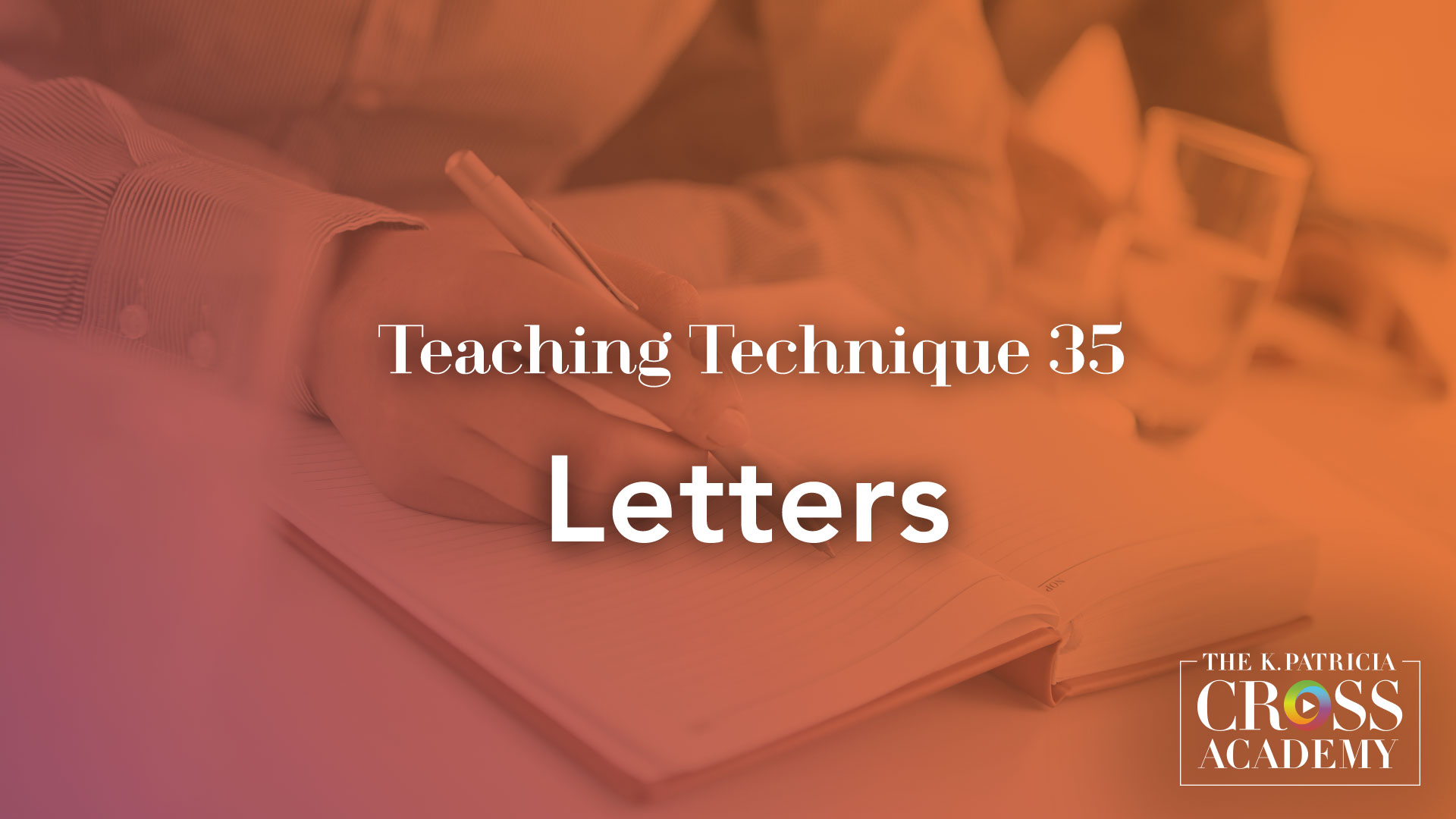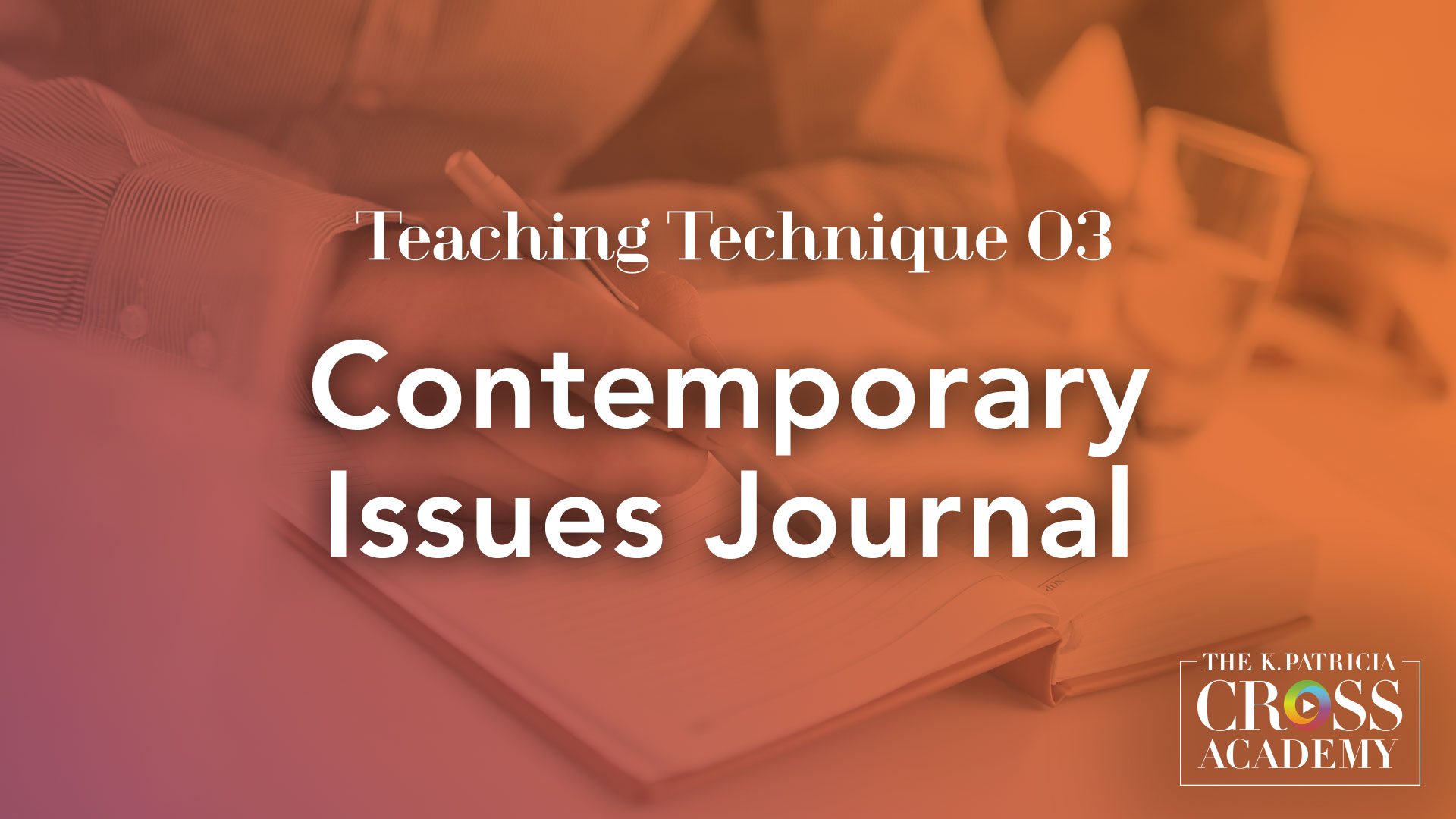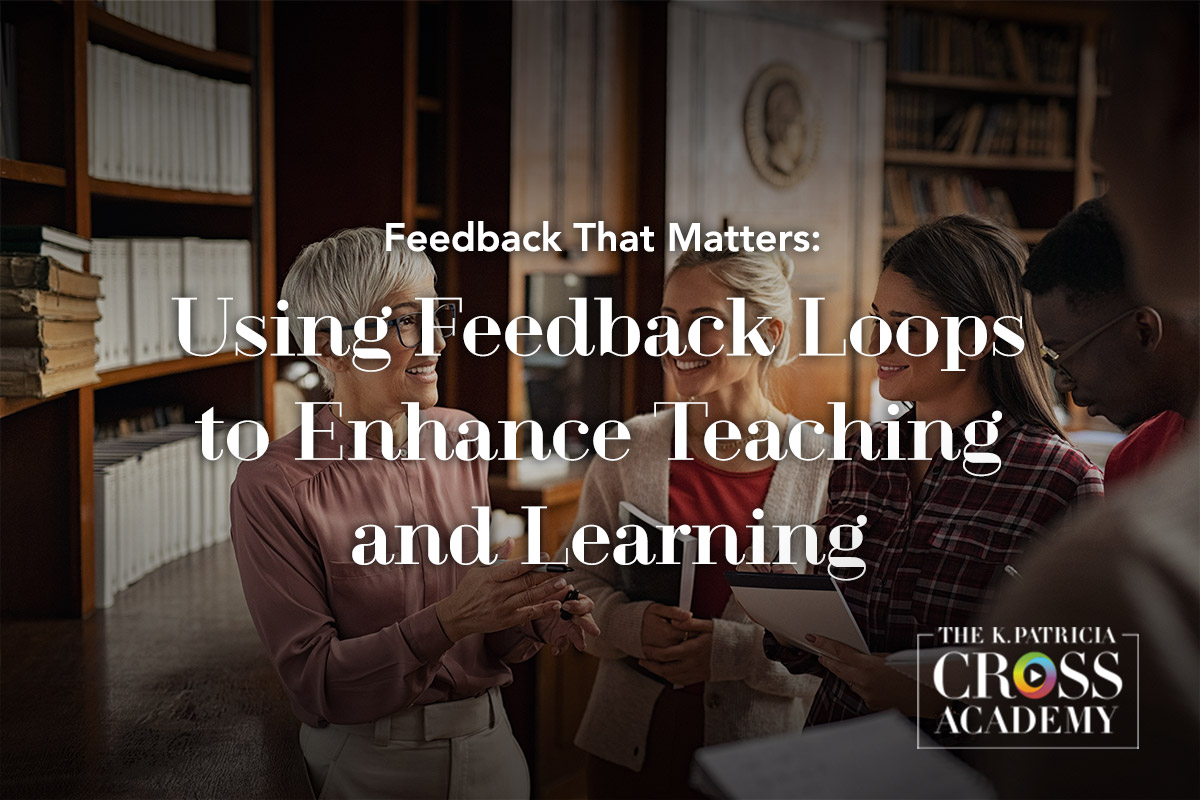
We write for many different reasons. Blogging, reporting, journaling, playwriting, scientific writing, opinion writing, recipe writing, songwriting, creative writing, writing for social media—the list of examples could go on and on. Even texting or emailing with friends and family is a near-constant form of writing we may take for granted. Writing is a form of expression, but it can also be an act of learning.
Academic writing is a particular approach that generates deep thinking and reflection that leads students to a process of knowledge discovery, synthesis, creation, evaluation, and communication. The National Commission on Writing (2003) describes academic writing as “not simply a way for students to demonstrate what they know. It is a way to help them understand what they know. At its best, writing is learning” (p. 51).
The act of examining new information and experiences in their own words helps students better understand, develop, and strengthen their knowledge of the material, as well as improve and showcase their creative skills and technical abilities.
[Writing is] not simply a way for students to demonstrate what they know. It is a way to help them understand what they know.
At its best, writing is learning.
One way that teachers can help students think through course material is “writing-to-learn” assignments. These activities are designed to improve retention of course content and further develop student understanding (Klein et al., 2018). Writing-to-learn assignments are different from tasks designed to demonstrate what students have learned such as term papers or essay questions; instead, writing-to-learn is a method of instruction involving brief writing assignments that contribute to improved student learning outcomes (Arnold et al., 2017). These could be impromptu activities such as asking students to write for a few minutes in class, or asking students to reflect on a lecture or homework assignments in an essay. Teachers can use the writing-to-learn approach in any number of situations, but they may be most useful in scenarios where students are asked to think about the task they’re completing and why.

Research on the Efficacy of Writing-to-Learn Assignments
While there are relatively few published studies comparing writing-to-learn tasks to other education activities, the existing research indicates that writing-to-learn assignments improve students’ knowledge comprehension as well as their critical thinking. In their mixed-method, quasi-experimental study, Fry and Villagomez (2012) examined the use of writing-to-learn activities in a required course for education students. They assessed the effect of writing-to-learn assignments on students’ learning in addition to student perceptions of writing-to-learn. Students were divided into a control group and a treatment group, and each week the students in the treatment group were given a writing prompt to help focus their journal writings while the control group was not. The researchers examined scores on pre-tests and post-tests across control groups and treatment groups to gauge where students’ perspectives of writing-to-learn had changed through the process and determine whether a shift had occurred. Quantitative analysis indicated that students’ participation in the writing group did not impact achievement of the course goals. However, qualitative analysis indicated that students did find value in the writing-to-learn assignments and said the tasks helped them better understand course material and develop stronger rapport with their teacher. Therefore, the research team still determined that writing-to-learn assignments are positive additions to education classes. However, they require some forethought to make them most effective.
Shaarawy (2014) also used a pre-post-test quasi-experimental design to study the influence of writing-to-learn activities on learning in an Egyptian undergraduate program. Students were divided into two groups; one group participated in a course that involved weekly journal-writing assignments while the other group’s course did not involve journaling. Shaarawy concluded that students who wrote weekly journal entries saw bigger improvement in their cognitive thinking abilities than those who did not.
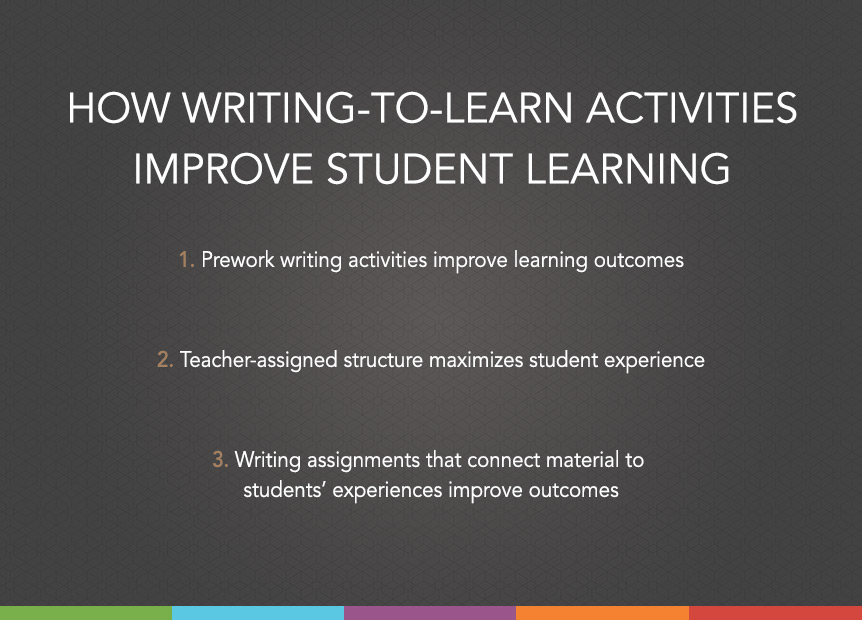
What Research Says About How to Improve Student Learning in Courses That Utilize Writing-to-Learn Activities
Much of the scholarship about writing-to-learn assignments consists of single courses or case studies that scrutinize different types of writing-to-learn activities to assess which have the greatest impact. In aggregate, the studies offer a path for educators to make writing-to-learn activities as helpful to students as possible.
Prework Writing Activities Improve Learning Outcomes
Some teachers assign writing-to-learn tasks to be completed before another type of instructional activity. For instance, you may task students with an impromptu writing-to-learn assignment in class after a lecture before later assigning a more formal writing project. Research suggests that this type of prework improves student learning and hones their abilities to demonstrate their learnings in later assignments (Kaleliogly & Gulbahar, 2014).
Teacher-Assigned Structure Maximizes Student Experience
Teachers often wonder whether the best approach for writing-to-learn activities is to assign structured or unstructured tasks. As more and more instruction moves online, recent studies have examined the use of structure in online discussion boards. For instance, Salter and Conneely (2015) assessed the online discussion posts of 97 students undertaking an Industrial-Organizational Psychology course. Students were asked to post three times each week to an online discussion forum. Some students participated in a structured forum in which the instructor posted a series of prompts for students to respond to; other students were in an unstructured forum and received no prompts from their teacher. The research team concluded that, while students enjoyed participating in both types of discussion board, the students who had the more structured approach had more positive views of the experience.
Writing Assignments That Connect Material to Students’ Experiences Improve Outcomes
Nevid (2012) studied the difference in outcome between reflective writing assignments and generic writing activities in two introductory psychology courses. The students in the reflective class wrote pieces that described how the course material related to their own lived experiences, while the students in the generic course just wrote pieces about what they had learned. The research team found that the reflective students performed better on final exam questions about key concepts from the course.
Balgopal et al. (2012) also studied the impact of reflective writing-to-learn tasks among three groups of college students: science majors at a public university, nonmajors at a public university, and Native American students in a two-year higher-ed program. The researchers hoped to empirically determine whether participating students were able to improve from a basic understanding of ecology to a deeper appreciation of how their individual actions could affect ecosystems. The research team developed a Cognitive-Affective-Behavior Writing-to-Learn Model (CAB-WTL) to guide the writing assignments. Students wrote three essays in response to a scientific prompt: in the first essay, students described their conceptual knowledge, in the second they reacted and reflected, and in the third, students were offered a scenario and asked to “identify a personal dilemma and describe how they might resolve this dilemma” (p. 72). Then, the researchers assigned each essay a category of superficial, subjective, objective, or authentic, and found that 33 percent of students across all three groups showcased authentic writing in at least one of their essays. As a result, the team concluded that writing prompts lead to deeper thinking.
Cross Academy Techniques
The following Cross Academy Technique are options to help implement writing-to-learn assignments in your courses:
Frames are sentence stem templates that students can use to create short essays, completing the sentences with their own ideas. The frames provide the shape of the writing but not the content.
In these assignments, students imagine they are writing a letter from the perspective of an important figure in your content discipline that articulates that person’s ideas about various issues, theories, or controversies.
In this technique, students keep an ongoing journal that they fill with quick analyses about current events and news items from the real world that relate to the course material.
Students come together to formulate a template and a plan to collect individual essays or research papers from each student that are then published together as a class book.
These are typically impromptu writing-to-learn assignments in which students briefly respond to an open-ended prompt related to the course material.
Email us to receive information about new blog posts.
References
Arnold, K. M., Umanath, S., Thio, K., Reilly, W. B., McDaniel, M. A., & Marsh, E. J. (2017). Understanding the cognitive processes involved in writing to learn. Journal of Experimental Psychology, 23(2), 115–127.
Balgopal, M. M., Wallace, A. M., & Dahlberg, S. (2012). Writing to learn ecology: a study of three populations of college students. Environmental Education Research, 18(1), 67–69.
Fry, S. W., & Villagomez, A. (2012). Writing to learn: Benefits and limitations. College Teaching, 60(4), 170–175.
Kalelioglu, F., & Gulbahar, Y. (2014). The effect of instructional techniques on critical thinking and critical thining dispositions in online discussion. Educational Technology & Society, 17(1), 248–258.
Klein, P. D., Haug, K. N., & Bildfell, A. (Eds.). (2018). Best practices in writing instruction. New York: Guilford Press.
National Commission on Writing. (2003). The neglected “R”: The need for a writing revolution. New York: National Commission on Writing in America’s Schools and Colleges.
Nevid, J. S. (2012). Psychology: Concepts and applications. Boston, MA: Cengage Learning.
Salter, N. P., & Conneely, M. R. (2015). Structured and unstructured discussion forums as tools for student engagement. Computers in Human Behavior, 46, 18–25.
Shaarawy, H. Y. (2014). The effect of journal writing on students’ cognitive critical thinking skills: A quasi-experimental research on an English as a Foreign Language (EFL) undergraduate classroom in Egypt. International Journal of Higher Education, 3(4), 120–128.
Suggested Citation
Barkley, E. F., & Major, C. H. (n.d.). How to use learn by writing exercises in your class. CrossCurrents. https://kpcrossacademy.ua.edu/how-to-use-learn-by-writing-exercise-in-your-class/
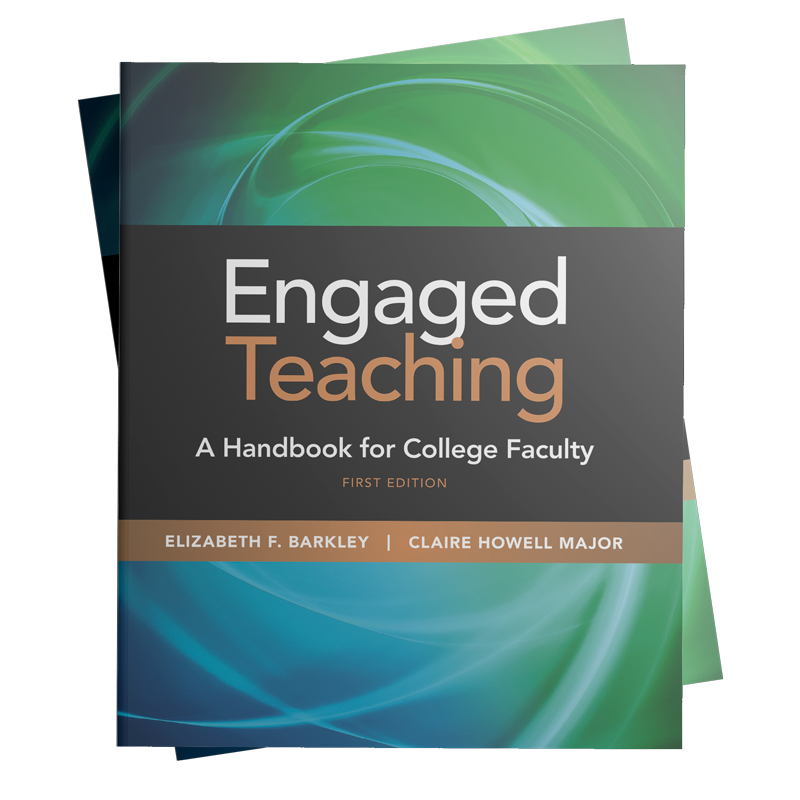
Engaged Teaching
A Handbook for College Faculty
Available now, Engaged Teaching: A Handbook for College Faculty provides college faculty with a dynamic model of what it means to be an engaged teacher and offers practical strategies and techniques for putting the model into practice.

